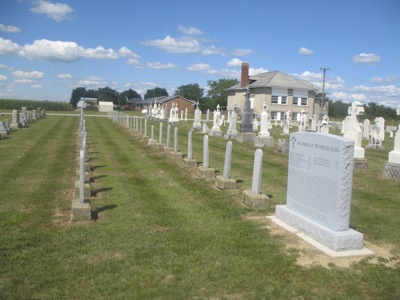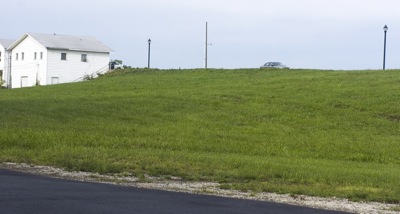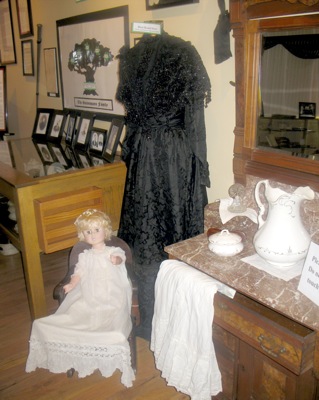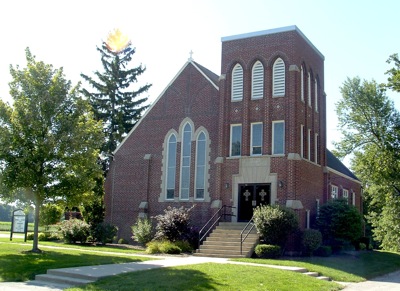Friday, September 2nd, 2011
Monument erected to honor religious order
By Margie Wuebker

Photo by Margie Wuebker/The Daily Standard
A new monument, shown in the foreground, honors the memory of sisters and brothers who served the Egypt community from 1856 to 1912. Their cathedral-shaped gravestones shown in the two nearby rows at St. Joseph Cemetery have been ravaged by time and the weather to a point where the names are no longer visible.
EGYPT - Fifty-five weathered grave markers stand in straight rows at St. Joseph Cemetery in memory of Precious Blood sisters and brothers who served the area more than a century ago.
The passage of time and weather have not been kind to the cathedral-style monuments fashioned of Vermont marble. Names have eroded along with dates and the letters R.I.P. (rest in peace), but etched crosses at the top remain visible.
"These grave sites are the only surviving bit of evidence from 1856-1912 that a vibrant and thriving religious community stood nearby," Sister Joyce Lehman, newly-elected president of the Sisters of the Precious Blood, said during dedication of a new monument Sunday morning at the cemetery. "It is fitting to erect this marker to preserve the history of these 55 souls."
The religious order purchased the monument of gray granite and commissioned plaques listing the names and year of death for 46 sisters and six brothers. Also listed are three orphans who died while residing at the orphanage run by the sisters.
The marker also contains historical information. The Missionaries of the Precious Blood were founded in 1815 in Italy and came to America in 1844. Some members served the Egypt area as a mission beginning eight years later.
Information provided by Lehman and local historian Barb Osterloh indicate the Precious Blood Sisters were established in 1834 in Switzerland. They also came to America in 1844 and a delegation was assigned to Egypt in August 1856. The nuns, who milked cows, fed the other livestock and helped farm 120 acres of land, took up residence in a spartan, two-room cabin with upstairs sleeping quarters.
The brothers helped build a more suitable convent. Construction was a lengthy process with the bricks molded on site by day and fired at night.
The convent marked the 10th and final one established by the Rev. Francis Brunner. He viewed the new convent as a place where religious aspirants coming to this country could become familiar with their new surroundings before deciding if religious life was for them.
The 40 nuns assigned to the new convent began perpetual adoration of the Blessed Sacrament after dedication ceremonies were conducted Dec. 24, 1856.
A girls' school came later, standing just off the large garden and adjoining grape arbor. A historical account penned by the Rev. David Hoying indicated most convents in the area had such schools because "Education for the girls of the area was foremost on the minds of the sisters."
The convent also became home to an orphanage as diseases such as cholera swept through the area.
The convent closed in 1912, and students were moved to a prosperous school in neighboring Minster. The nuns were reassigned to Maria Stein. A High Mass on Nov. 21 heralded the closing with 20 priests and a multitude of nuns attending.
The acreage was sold off in pieces with the last part of the convent torn down in 2002.
Lehman reminded parishion-ers attending Sunday's dedication service that the new monument and rows of smooth grave markers will honor the sisters and brothers who dedicated their lives in service to the needs of German immigrants who called Egypt home.







